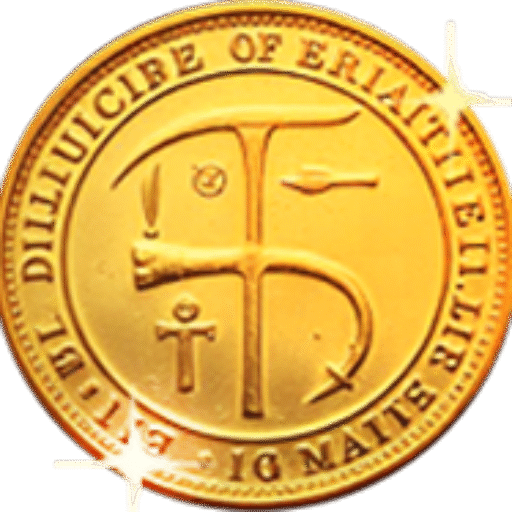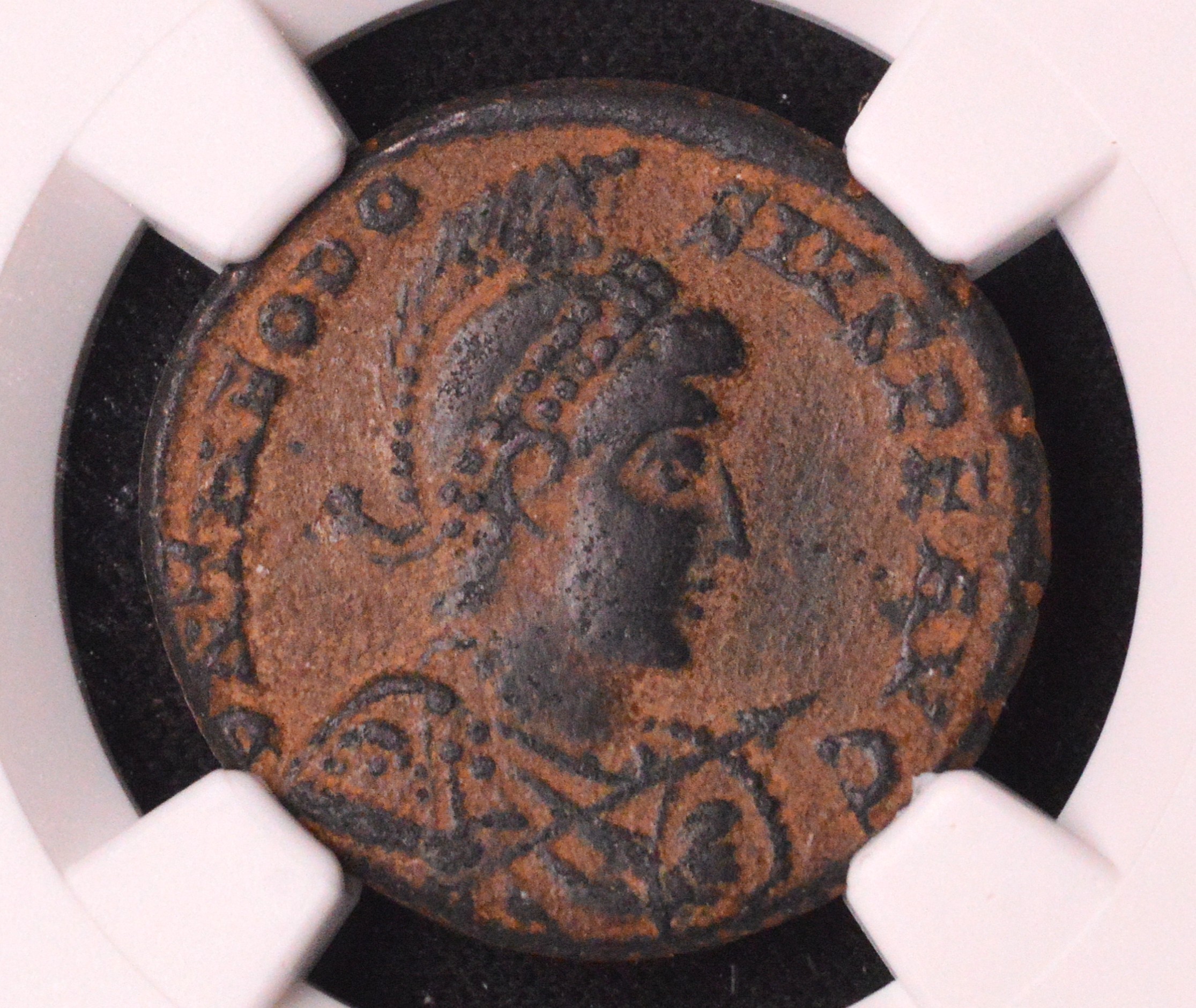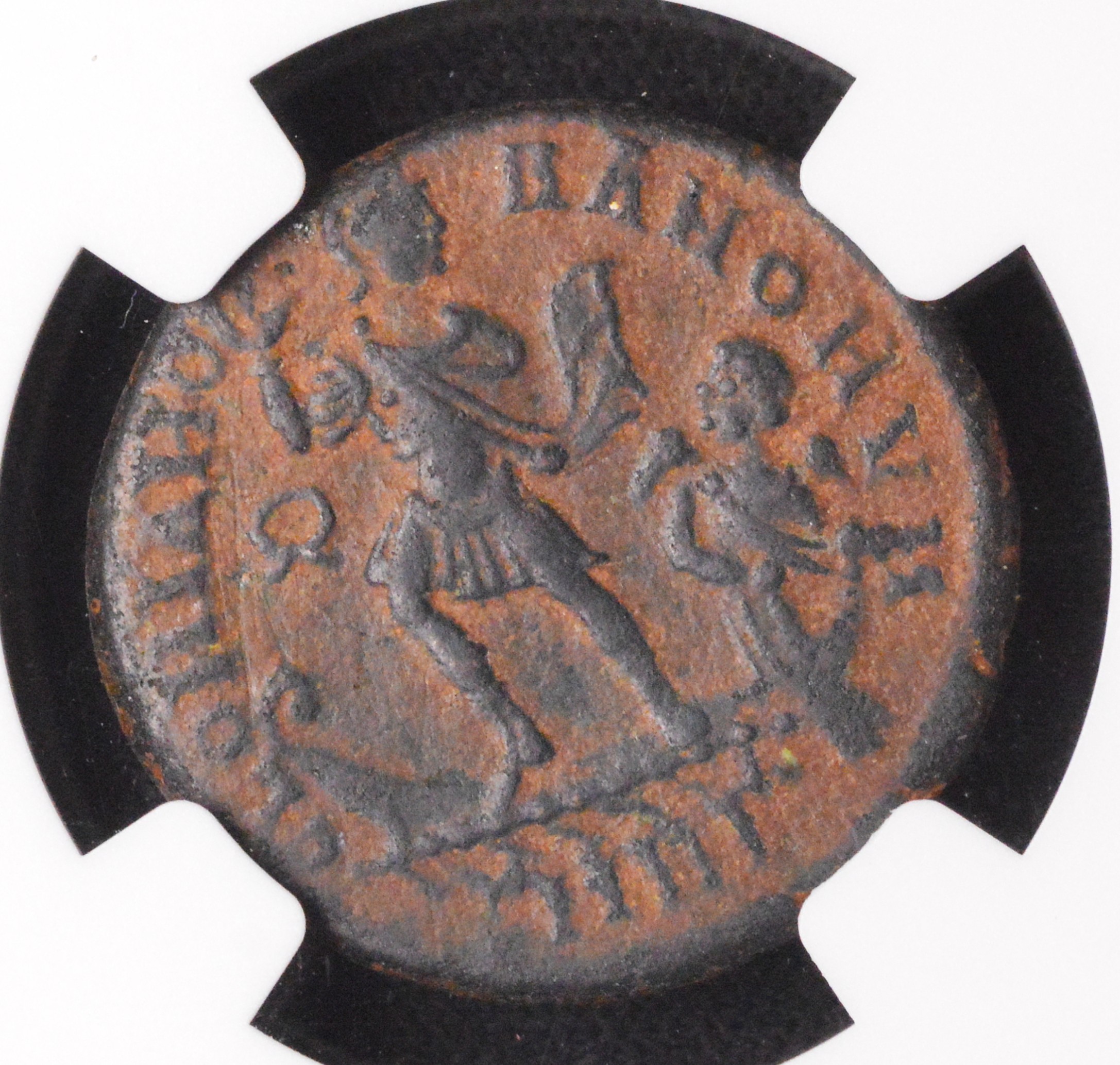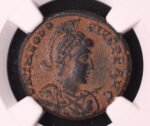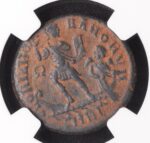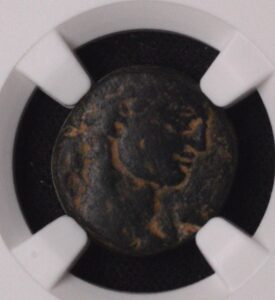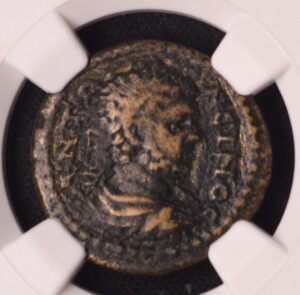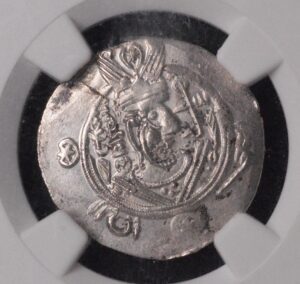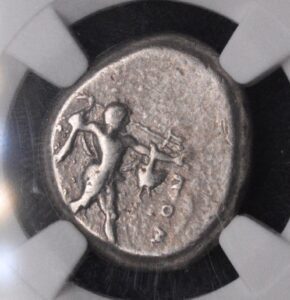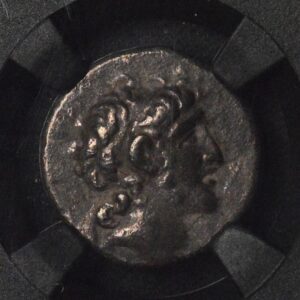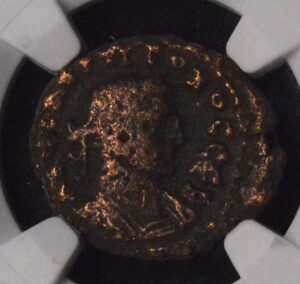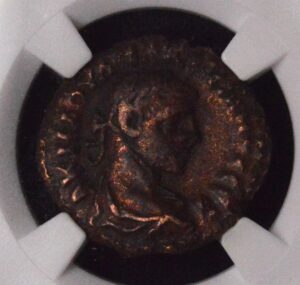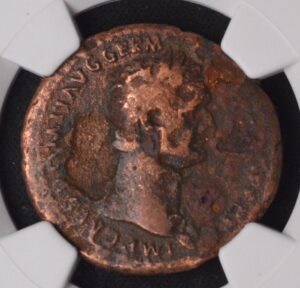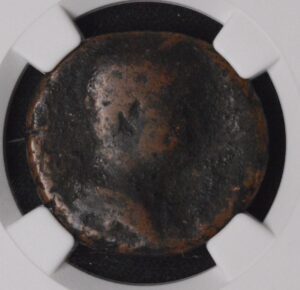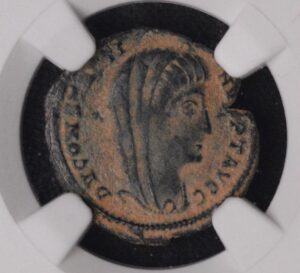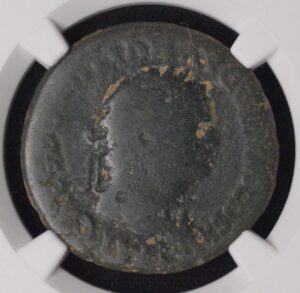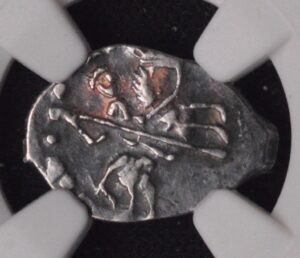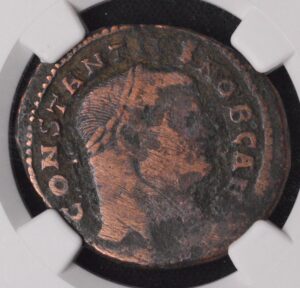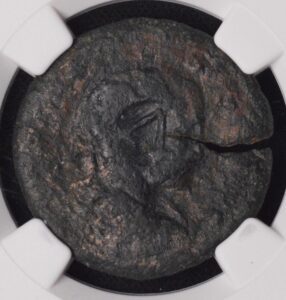Description
Theodosius I, known as Theodosius the Great, was Roman emperor from 379 to 395 AD and the last ruler of a united Roman Empire before its permanent division into eastern and western halves. He rose to power during a time of great military and political turmoil after the Battle of Adrianople and was tasked with dealing with the Gothic invasions. Despite severe challenges, he managed to secure a fragile peace by allowing the Goths to settle within the empire as autonomous federates, ensuring relative stability on the empire’s northern frontier. His military leadership helped to consolidate imperial control over fragmented territories.
Religiously, Theodosius was a staunch supporter of Nicene Christianity. He made it the empire’s official faith and vigorously opposed paganism and Arian Christianity. In 381, he convened the First Council of Constantinople, which reinforced Nicene orthodoxy. Theodosius issued strict laws banning pagan worship and heretical practices, leading to the closure and destruction of some pagan temples. Nonetheless, he navigated a complex religious landscape carefully, as remnants of paganism still persisted along with non-Christian officials within the administration.
Politically, Theodosius ruled the Eastern Roman Empire before becoming the sole emperor after the deaths of his Western counterparts. He led campaigns to defeat usurpers such as Magnus Maximus and Eugenius, winning decisive victories that reunited the empire under his control by 394. His reign marked the beginning of the permanent division of the Roman Empire, as he appointed his sons Arcadius and Honorius as emperors of the East and West, respectively, laying the groundwork for the Byzantine and Western Roman Empires.
Theodosius’ rule saw significant administrative and urban developments, especially in Constantinople. He expanded the city’s Forum Tauri, improved fortifications, and commissioned monuments reflecting imperial power and Christian authority. His military forces, often including barbarian auxiliaries, secured the empire’s frontiers for a time, though the pressures from external tribes remained a constant threat. Despite challenges, his leadership is credited with maintaining relative peace and order through a tumultuous historical period.
In summary, Theodosius I was a pivotal emperor who preserved the unity of the Roman Empire one last time, firmly established Christianity as the state religion, and shaped the political structure that influenced the late ancient world. His reign combined military successes, religious reforms, and political consolidation that deeply impacted the trajectory of European and Mediterranean history.
Theodosius I, known as Theodosius the Great, was Roman emperor from 379 to 395 AD and the last ruler of a united Roman Empire before its permanent division into eastern and western halves. He rose to power during a time of great military and political turmoil after the Battle of Adrianople and was tasked with dealing with the Gothic invasions. Despite severe challenges, he managed to secure a fragile peace by allowing the Goths to settle within the empire as autonomous federates, ensuring relative stability on the empire’s northern frontier. His military leadership helped to consolidate imperial control over fragmented territories.
Religiously, Theodosius was a staunch supporter of Nicene Christianity. He made it the empire’s official faith and vigorously opposed paganism and Arian Christianity. In 381, he convened the First Council of Constantinople, which reinforced Nicene orthodoxy. Theodosius issued strict laws banning pagan worship and heretical practices, leading to the closure and destruction of some pagan temples. Nonetheless, he navigated a complex religious landscape carefully, as remnants of paganism still persisted along with non-Christian officials within the administration.
Politically, Theodosius ruled the Eastern Roman Empire before becoming the sole emperor after the deaths of his Western counterparts. He led campaigns to defeat usurpers such as Magnus Maximus and Eugenius, winning decisive victories that reunited the empire under his control by 394. His reign marked the beginning of the permanent division of the Roman Empire, as he appointed his sons Arcadius and Honorius as emperors of the East and West, respectively, laying the groundwork for the Byzantine and Western Roman Empires.
Theodosius’ rule saw significant administrative and urban developments, especially in Constantinople. He expanded the city’s Forum Tauri, improved fortifications, and commissioned monuments reflecting imperial power and Christian authority. His military forces, often including barbarian auxiliaries, secured the empire’s frontiers for a time, though the pressures from external tribes remained a constant threat. Despite challenges, his leadership is credited with maintaining relative peace and order through a tumultuous historical period.
In summary, Theodosius I was a pivotal emperor who preserved the unity of the Roman Empire one last time, firmly established Christianity as the state religion, and shaped the political structure that influenced the late ancient world. His reign combined military successes, religious reforms, and political consolidation that deeply impacted the trajectory of European and Mediterranean history.
Theodosius I, known as Theodosius the Great, was Roman emperor from 379 to 395 AD and the last ruler of a united Roman Empire before its permanent division into eastern and western halves. He rose to power during a time of great military and political turmoil after the Battle of Adrianople and was tasked with dealing with the Gothic invasions. Despite severe challenges, he managed to secure a fragile peace by allowing the Goths to settle within the empire as autonomous federates, ensuring relative stability on the empire’s northern frontier. His military leadership helped to consolidate imperial control over fragmented territories.
Religiously, Theodosius was a staunch supporter of Nicene Christianity. He made it the empire’s official faith and vigorously opposed paganism and Arian Christianity. In 381, he convened the First Council of Constantinople, which reinforced Nicene orthodoxy. Theodosius issued strict laws banning pagan worship and heretical practices, leading to the closure and destruction of some pagan temples. Nonetheless, he navigated a complex religious landscape carefully, as remnants of paganism still persisted along with non-Christian officials within the administration.
Politically, Theodosius ruled the Eastern Roman Empire before becoming the sole emperor after the deaths of his Western counterparts. He led campaigns to defeat usurpers such as Magnus Maximus and Eugenius, winning decisive victories that reunited the empire under his control by 394. His reign marked the beginning of the permanent division of the Roman Empire, as he appointed his sons Arcadius and Honorius as emperors of the East and West, respectively, laying the groundwork for the Byzantine and Western Roman Empires.
Theodosius’ rule saw significant administrative and urban developments, especially in Constantinople. He expanded the city’s Forum Tauri, improved fortifications, and commissioned monuments reflecting imperial power and Christian authority. His military forces, often including barbarian auxiliaries, secured the empire’s frontiers for a time, though the pressures from external tribes remained a constant threat. Despite challenges, his leadership is credited with maintaining relative peace and order through a tumultuous historical period.
In summary, Theodosius I was a pivotal emperor who preserved the unity of the Roman Empire one last time, firmly established Christianity as the state religion, and shaped the political structure that influenced the late ancient world. His reign combined military successes, religious reforms, and political consolidation that deeply impacted the trajectory of European and Mediterranean history.
CUSTOMER FEEDBACK



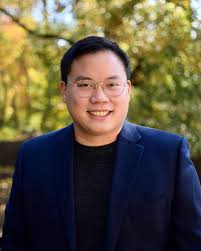
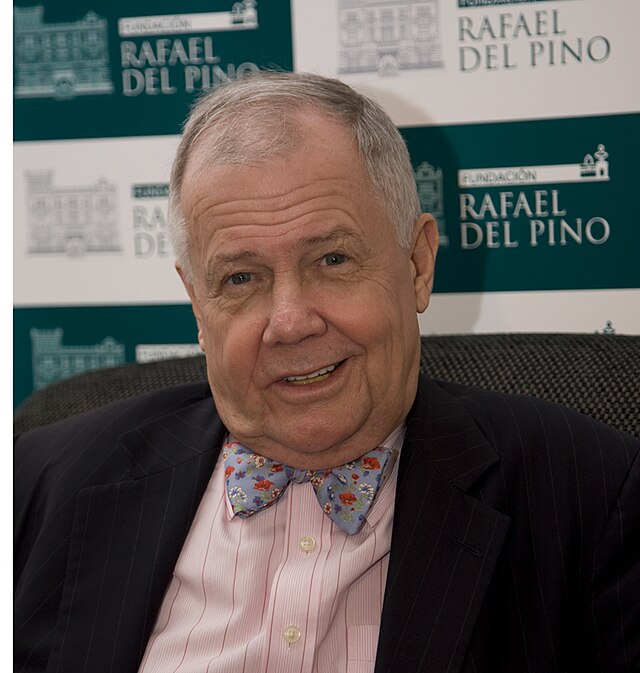
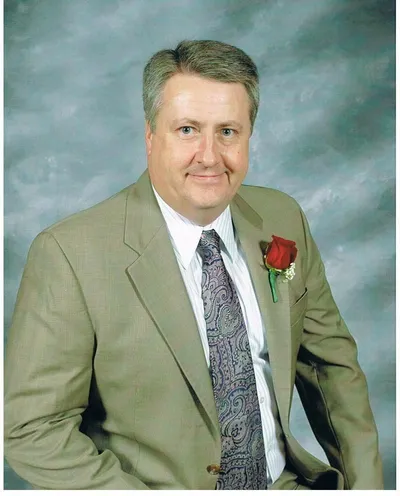


Related Products & Newly Released!
-
$400.00




SHIPPING POLICY
Your order is shipped from the United States with USPS tracking within one business day.
14 Day Return Policy
You can return your item back within
14 days of the purchase

Secure payments
Your payments are 100% secure and are processed through Square or PayPal on a protected security network.
SHIPPING POLICY
FREE International and Domestic (United States) shipping. Your order is shipped with USPS tracking 24 hours after you order.
14 Day Return Policy
You can return your item back within
14 days of the purchase

Secure payments
Your payments are 100% secure and are processed through Square or PayPal on a protected security network.
RESOURCES
support
Get Fresh Articles!
Sign up now to receive our articles for the latest insights and promotions!
RESOURCES
support
Get Fresh Articles!
Signup our newsletter to get update insight or promotions.

